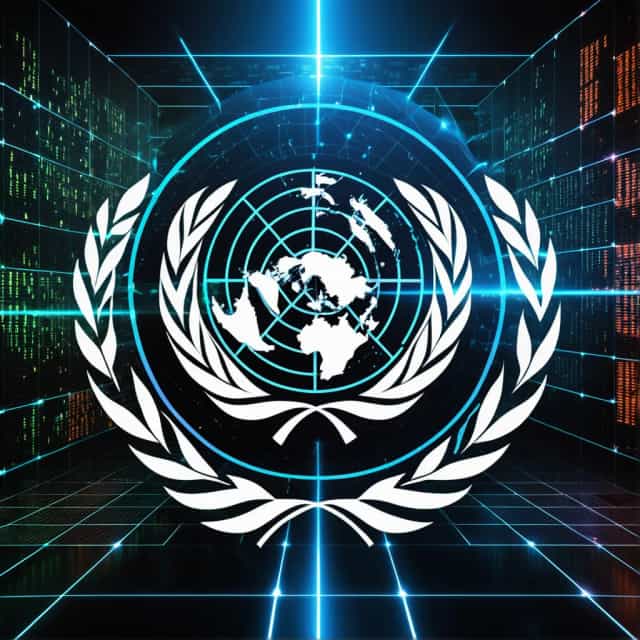
Image source: Block Media
CertiK CEO Champions South Korea's VAUPA As A Catalyst For Web3 Industry Advancement
A Landmark Legislation Catalyzing Trust in Web3
The Virtual Asset User Protection Act (VAUPA), introduced in South Korea in July, is transforming the region’s Web3 ecosystem, emphasizing trust and compliance in a burgeoning industry. Ronghui Gu, CEO and co-founder of CertiK—global leaders in blockchain security—hailed this legislative milestone as a pivotal moment, one that provides “a crucial opportunity for sustainable integration into mainstream finance.” Gu also underscored CertiK’s commitment to ensuring regulatory frameworks are seen not as barriers but safeguards that fortify the industry as it scales globally.
As a Columbia University professor and Yale Ph.D., Gu founded CertiK in December 2017, driven by the need for impeccable security in decentralized systems. Named after “CertiKOS,” the world’s first hacking-resistant operating system kernel—which Gu developed—the firm integrates rigorous mathematical methodologies into its security framework. CertiK has since identified over 180,000 vulnerabilities, safeguarding more than $600 billion in digital assets across thousands of projects, solidifying its role as the world’s leading Web3 security firm.
VAUPA's Impact: Expanding Opportunities in South Korea
According to Gu, VAUPA sets new benchmarks for compliance and trust in South Korea’s blockchain ecosystem, fostering demand for reliable security solutions. “This legislation has opened doors for independent security and compliance partners,” he stated, underscoring the business opportunities it creates for firms like CertiK.
To address these compliance requirements, CertiK provides advanced solutions such as smart contract audits to secure blockchain code integrity, Skynet’s real-time monitoring and risk management tools, and SkyInsights for anti-money laundering (AML) and counter-terrorist financing (CTF) compliance.
CertiK has also forged strong partnerships across the Korean blockchain sector, collaborating with firms like Wemix (WEMIX) and KAIA (KAIA). A promotional video celebrating Wemix's success received over 500,000 views on CertiK’s social media platform X (formerly Twitter), highlighting the high-profile impact of these collaborations. Additionally, CertiK has formalized partnerships with Seoul Metropolitan City and Busan City through memorandums of understanding (MOUs), further bolstering trust at the governmental level.
CertiK’s presence at Korea Blockchain Week (KBW) 2025 supported its growing influence. The firm unveiled the “Skynet Korea Report,” offering data-driven insights into the region’s blockchain landscape. Gu plans to amplify CertiK’s footprint by expanding the local office and ramping up hiring initiatives. “By leveraging our regulatory collaboration experience in six jurisdictions—including Japan and Hong Kong—we strive to help South Korea establish global compliance benchmarks,” he added.
The Academic Roots of CertiK
CertiK’s inception dates back to Gu’s response to the 2016 Ethereum DAO hack, an incident that illuminated the catastrophic consequences of vulnerabilities in decentralized ecosystems. Determined to bring academic rigor to blockchain security, Gu introduced “formal verification” methodologies to Web3, ensuring resilience against attacks.
Gu continues to balance dual roles as CertiK CEO and Columbia University professor, fostering a symbiotic relationship between academia and industry. Formal verification research at Columbia informs CertiK’s technological advancements, impacting key projects like TON and zkWasm. Similarly, data from CertiK’s 5,000+ clients influences Gu’s academic research and student training. “The interplay creates a feedback loop that strengthens both fields,” Gu remarked.
CertiK’s Competitive Edge: Formal Verification and Real-Time Monitoring
CertiK’s dominance in blockchain security stems from two technological pillars: formal verification and real-time monitoring.
Formal verification employs mathematical proofs to validate code functionality across all potential scenarios, transcending conventional testing methods. “Unlike traditional testing, which verifies select conditions, formal verification mathematically ensures systems consistently adhere to established rules,” Gu explained. This elevated level of precision is vital for Web3's high-stakes environments.
Complementing this is Skynet, CertiK’s platform for continuous monitoring of blockchain systems. As blockchain networks evolve through code updates and integrations, 24/7 security monitoring is essential. Skynet scans networks in real time, identifying anomalous activity or vulnerabilities and issuing immediate alerts. Its security scoring system applies impartial criteria across all projects, irrespective of the client’s status—making it a cornerstone of transparent Web3 infrastructure.
Balancing Anonymity With Accountability
Striking the ideal balance between Web3’s ethos of anonymity and the industry’s need for accountability, CertiK’s Know Your Customer (KYC) services play a vital role. “Our KYC framework securely verifies identities while ensuring confidentiality. This acts as a safeguard for users and ecosystems in cases of disputes,” Gu noted.
At Korea Blockchain Week, Gu participated in fireside discussions alongside Wemix CEO and the Kaia DLT Foundation chairman, addressing emerging security challenges. CertiK’s collaborations aim to strengthen Web3 infrastructure holistically, blending compliance efforts with protocol-level security.
CertiK also operates validator nodes for blockchains like KAIA, monitoring network activity in real time. These operations enhance the accuracy of their auditing and monitoring services, creating a proactive security cycle that benefits the entire blockchain ecosystem.
Future Threats: The Rise of Human Factors
Looking ahead, Gu identifies human-related threats—such as phishing and social engineering—as the greatest challenges to Web3 security over the next 3–5 years. “As protocols and smart contracts become safer, attackers are turning their focus to exploiting people,” he said. With advancements in artificial intelligence, these schemes are expected to grow more sophisticated.
CertiK is responding by advancing AI-driven threat detection tools while launching educational programs to mitigate insider risks. The company is also partnering with regulatory authorities to elevate industry-wide security standards further.
Pioneering a Security-First Culture
CertiK’s long-term vision is guiding the Web3 industry toward a security-first approach. “We aim to empower developers with tools and standards that embed security from the beginning,” Gu stated. Moving away from outdated post-audit practices, CertiK champions proactive solutions that enable safe design practices at every phase of development.
As South Korea leads the way in regulatory innovation with VAUPA, CertiK stands at the forefront, merging academia, industry expertise, and technological ingenuity to redefine blockchain security globally. With rigorous methodologies and forward-thinking strategies, the company envisions a safer, more resilient Web3 ecosystem for future generations.










